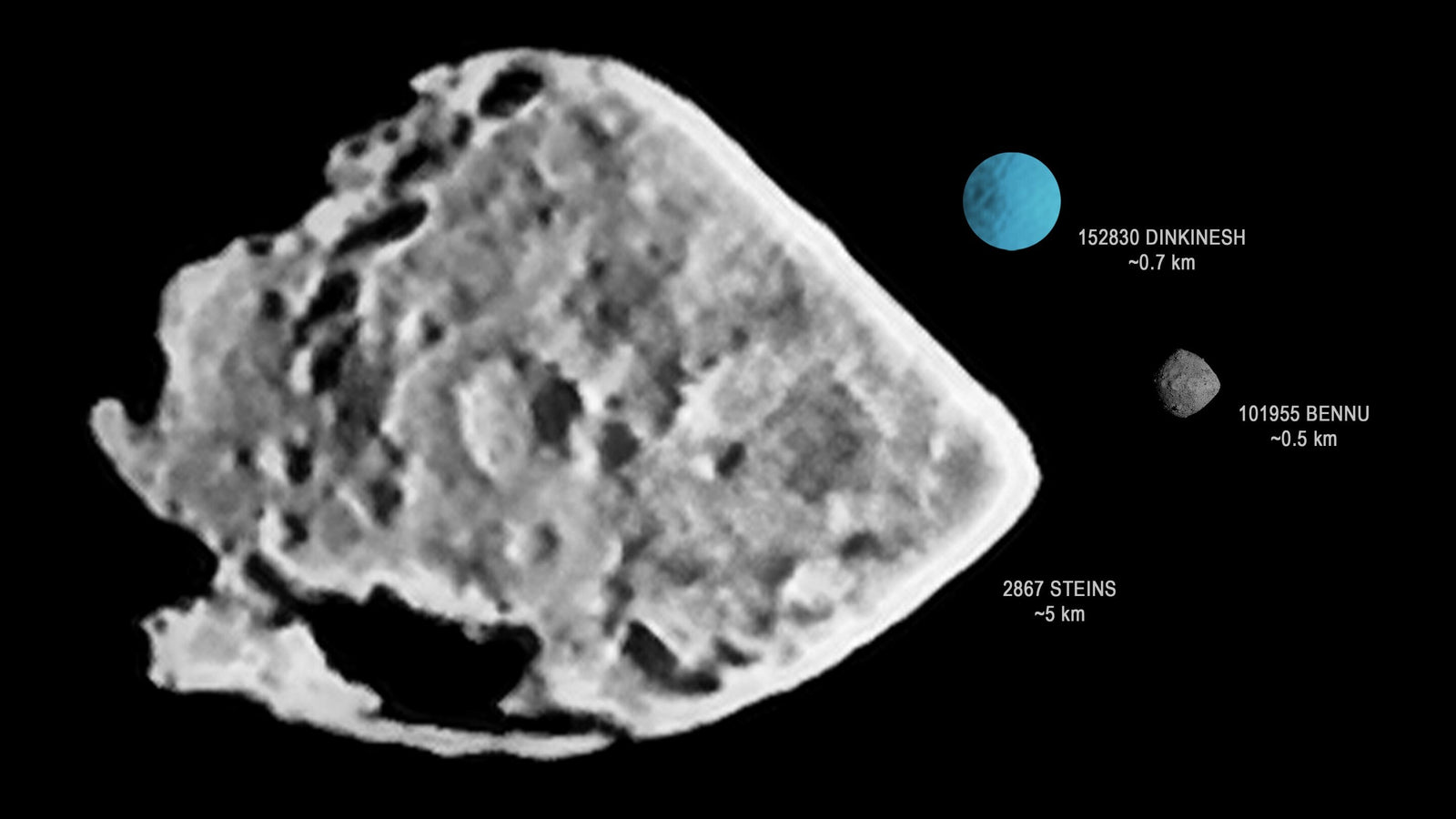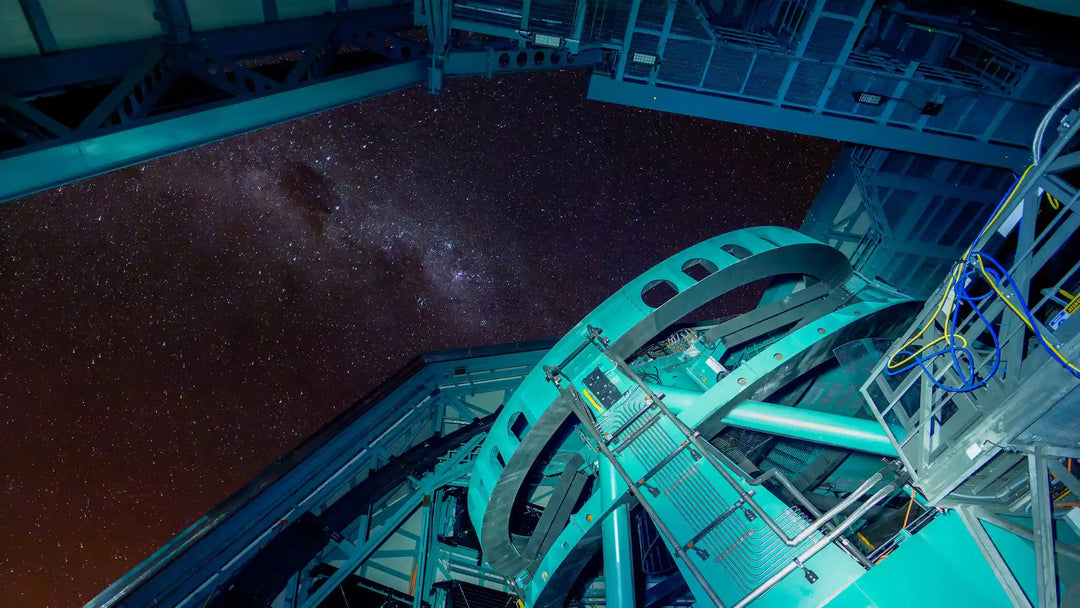NASA's Lucy Mission: new target gets a name

On January 24, 2023, NASA’s Lucy mission gained a new target that will be the first in line. The main belt tiny asteroid 1999 VD57 provides a great opportunity to carry out a dress rehearsal before the Lucy spacecraft will reach the other asteroids of the mission. This motivated scientists to give the asteroid 1999 VD57 a real name: Dinkinesh.
NASA's Lucy Mission: Goals & Overview
NASA’s Lucy spacecraft was launched on October 16, 2021. The mission is named after an early hominid’s fossil skeleton found in 1974 in Ethiopia. It provided exceptional insights into human evolution. And now it’s time for Lucy mission to expand our knowledge about the formation of our planetary system.
Trojan asteroids - first Lucy's goal
It is the first space mission aiming to explore the Trojans. These are asteroids from the outer Solar System. They are moving in two swarms on the same orbit as Jupiter, one in front of it and one behind it.
The Trojan asteroids are intact for billions of years because they are trapped around the Lagrange Points created by gravitational influences of the Sun and Jupiter.
Models suggest that the Trojan asteroids originate from the same material that created the outer planets of our Solar System. These small bodies can have something to tell about the early time of our planetary system and maybe even about organic elements on Earth.
Lucy will investigate ten asteroids during its planned 12-year mission through the Jupiter Trojan asteroids. The mission will address the following science objectives:
- Surface Geology – Lucy will map the albedo, shape, crater spatial and size-frequency distributions, determine the nature of crustal structure and layering, and determine the relative ages of surface units
- Surface Color and Composition – Lucy will map the color, composition and regolith properties of the surface of the Trojan asteroid and determine the distribution of minerals, ices, and organic species
- Interiors and Bulk Properties – Lucy will determine the masses and densities, and study sub-surface composition via excavation by craters, fractures, ejecta blankets, and exposed bedding
- Satellites and Rings – Lucy will look for rings and satellites of the Trojan asteroids
Check also:
- The Earthrise Photo: A Journey Through Earth’s Iconic Space Portrait
- William Bill Anders Tribute: Astronaut, Earthrise Photographer, Aviator
Pale Blue Dot Image: What About Large Format Prints like Fine Art?
James Webb Space Telescope uncovers young stars in NGC 346’s dusty ribbons
JADES-GS-z14-0: NASA's JWST Discovering the Most Distant Galaxy
Hubble Telescope Captures a Stellar Trio: The Dawn of a Sun-like Star
Enceladus holds potential for alien life with recent discovery of vital element
Anticipating the celestial show – Betelgeuse's potential supernova event
Supernova 2020eyj: First radio signal from the massive explosion of a dying white dwarf
Lucy Mission: additional destination on the 12-year journey
In the original plan, Lucy was going to fly by its first asteroid in 2025. The aim was a close-up of the main belt asteroid (52246) Donaldjohanson. But on January 24, 2023, the Lucy team of scientists officially added a new asteroid to Lucy’s journey.

Dinkinesh Asteroid: Lucy's new target
The main belt asteroid (152830) Dinkinesh became the first one to be visited by Lucy. The flyby will be used as an engineering test of Lucy’s new technology terminal tracking system. With the old systems, it was difficult to determine the spacecraft’s position during the flybys in relation to a passing object. This created a necessity to take pictures of the regions where the investigated object might have been at the moment. It resulted in tons of pictures of nothing and was quite a waste of potential and resources.
Lucy will be the first flyby mission to test the new system. It will automatically track the object and this will allow the spacecraft to take many more pictures than if it would take them while being “blind”. (152830) Dinkinesh also provides an opportunity to test the encounter procedure, which will be very similar to the Trojan asteroid flybys.
Read more:
The meaning of the name Dinkinesh
The International Astronomical Union recently approved the small asteroid’s name. When it was discovered, it got a provisional designation 1999 VD57. Some years later, after studying and better understanding its orbit, the asteroid was given an official number, 152830. It was unnamed until the Lucy team chose it as a target.
"Dinkinesh" or ድንቅነሽ in Amharic, is the Ethiopian name of the human-ancestor fossil, known as Lucy, which was found in Ethiopia. Dinkinesh means "you are marvelous" in Amharic.
The spacecraft will perform a series of maneuvers to get closer to (152830) Dinkinesh so it can pass the asteroid with a distance of approximately 280 miles (450 kilometers). The adjusting maneuvers will start in May 2023. Lucy will approach the small asteroid on November 1, 2023.
Summary
With an estimated size of about 0.4 miles (700 m), (152830) Dinkinesh will become the smallest main-belt asteroid ever visited. It may reveal some new aspects of the history of the Solar System.
References
- Lucy - the first mission to explore the Jupiter Trojan asteroids, Science NASA, [26.04.2024]
- Lucy Science Goals, Science NASA, [26.04.2024]
- NASA’s Lucy Team Announces New Asteroid Target, NASA, [26.04.2024]
- Jones A., NASA's Lucy asteroid mission adds 10th space rock target, Science, [26.04.2024]
- NASA's Lucy spacecraft preparing for its first asteroid flyby, phys.org, [26.04.2024]


![Vera C. Rubin Observatory: Revolutionizing Astronomy Through the World's Most Advanced Telescope [All You Need To Know]](http://astrography.com/cdn/shop/articles/vera-c.-rubin-observatory_main.webp?v=1751627507&width=1080)

Leave a comment